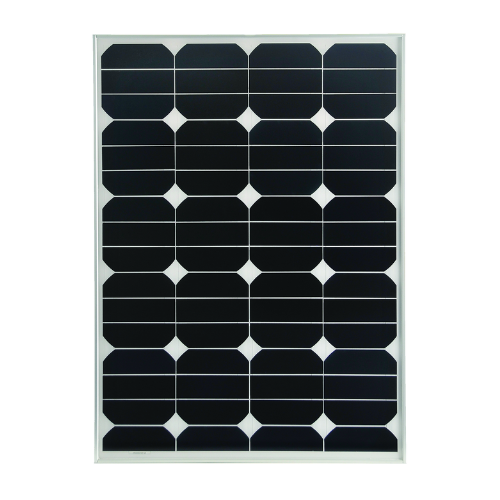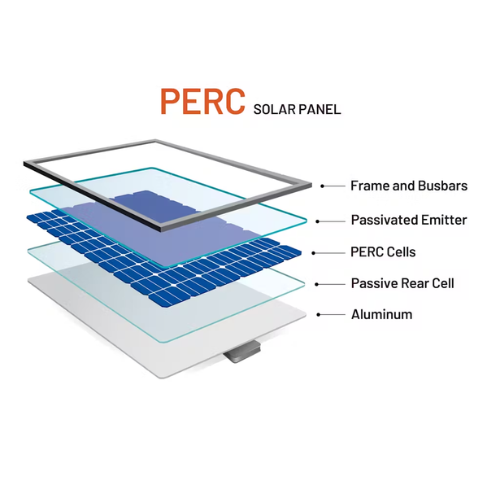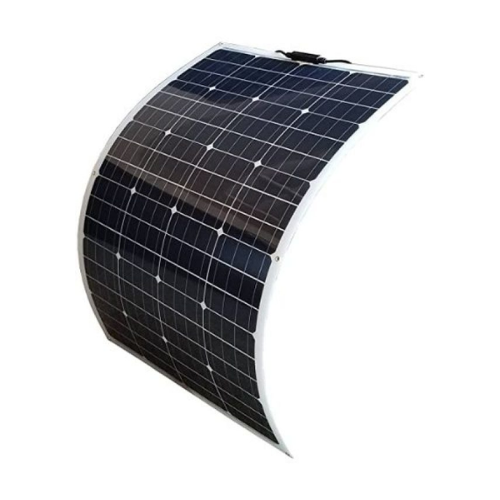TYPES OF SOLAR PANELS
The solar panels can be divided into 4 major categories:
-
Monocrystalline solar panels
-
Polycrystalline solar panels
-
Passivated Emitter and Rear Contact cells (PERC) solar panels
-
Thin-film solar panels
The solar panels are determined by the type of solar cells present in it. Each cell has
a unique characteristic and has a different appearance.
1. Monocrystalline Solar Panels
The monocrystalline solar panels are also known as the single crystal panels. They
are made from pure silicon crystal which is sliced into several wafers forming cells.
These wafers are cut to an octagonal shaped wafer because of which they get their
unique look and uniform colour. They can be easily identified by their black or dark
blue colour, as they are made from pure silicon
Feature of Monocrystalline Solar Panels
-
Monocrystalline solar panels have higher conversion efficiency which means
that they produce more kW/hour of electricity. It is because they are
composed of a single silicon crystal which allows more space for the electrons
to move.
-
The monocrystalline panels display higher heat resistance as compared to
other panels, which means that their electricity production capacity is less
affected by heat and they produce electricity at a higher efficiency at high
temperatures.
-
The monocrystalline panels are more expensive as compared to other panels
since the manufacturing process of single-crystal silicon cells is complex.
-
Thin-film solar panels
2. Polycrystalline Solar Panels
The polycrystalline solar panels are composed of multiple silicon crystals. They are
made from silicon fragments that are melted and poured into square molds. Once
these crystals are cooled, they are sliced into thin wafers and assembled together to
form a polycrystalline solar panel. They are also known as “multi-crystalline” panels.
Features of Polycrystalline Solar Panels
-
Polycrystalline solar panels have lower efficiency than monocrystalline solar
panels as they are composed of multiple silicon crystals due to which there is
limited room available for the electrons to move.
-
The polycrystalline panels can be identified by the square shape of the cells
and shining blue hue with straight edges.
-
These panels are more affordable than monocrystalline solar panels as the
manufacturing process is simpler and less silicon is wasted during the whole
process.
3. Passivated Emitter and Rear Cell (PERC) Solar Panels
Also known as ‘rear cells’, PERC solar panels are manufactured using advanced
technology. It is done by adding a layer on the back of solar cells. The traditional
solar panels absorb sunlight only to some extent and some light passes straight
through them. The additional layer in the PERC panels allows this unabsorbed
sunlight to be absorbed again from the rear side of the panels, making it even more
efficient.
Nowadays, PERC technology is typically combined with Monocrystalline cells to
produce high efficiency Mono-PERC panels which have the highest power ratings
among commercially available solar panels
Features of Passivated Emitter and Rear Cell (PERC) solar panels
-
PERC solar panels are more efficient as compared to traditional solar panels
as they absorb more sunlight.
-
There is an additional layer at the back of the panels which reflects the
unabsorbed sunlight back to the solar cells for further absorption of the
sunlight.
4. Thin-film Solar Panels
Unlike monocrystalline and polycrystalline solar panels, thin-film solar panels are
manufactured using photovoltaic substances which include Amorphous silicon (a-Si),
copper indium gallium selenide (CIGS) and cadmium telluride (CdTe). These
substances are deposited onto a solid surface such as glass, metal or plastic making
it lighter and easy to install.
Features of Thin-film solar panels
-
Thin-film solar cells are comparatively lightweight and more flexible than
traditional silicon panels, thus making them easy to install.
-
They are less efficient compared to silicon crystalline panels. However, they
have a lesser carbon footprints and are comparatively cheaper than the other
panels.
-
These types of panels are most suitable for large rooftop areas or places
having wide open space.

Monocrystalline solar panels

Polycrystalline solar panels

PERC solar panels

Thin-film solar panels